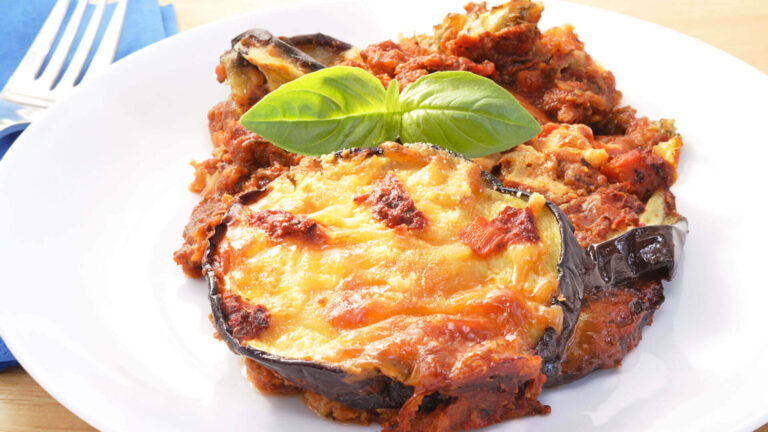For some people, the terms ‘spaghetti’ and ‘linguine’ might seem interchangeable. After all, both are long, thin, Italian pasta made from the same type of dough.
However, upon closer inspection, you’re bound to note some dissimilarities between the two kinds of pasta. But before we jump on the linguine vs. spaghetti bandwagon, let’s explore each one individually.
Linguine vs. Spaghetti: Know Your Pasta
Both linguine and spaghetti belong to the long-pasta category, alongside fan favorites like fettuccine, angel hair, and capellini. Here’s what you should know to understand the differences between linguine and spaghetti.
1. What Is Linguine?
Linguine is a long, strand pasta originating in Northwestern Italy (Liguria, to be exact), and it’s available in both fresh and dried forms. The term is translated to mean ‘little tongues,’ most likely because the cross-section of this pasta resembles the shape of a tongue. Linguine strands are usually about 3-4 millimeters wide.
Although linguine is a strand of pasta, it is not rolled and cut like fettuccine. Instead, the semolina-and-egg-based dough is forced through a special dye, which molds it into a specific shape. Due to this, it’s a little harder to make linguine at home, unless you have an extruder attachment on your pasta machine.
2. What Is Spaghetti?
Spaghetti, literally meaning ‘small strings,’ is incredibly popular around the globe. It is widely regarded as the quintessential Italian pasta, made from purified middlings of durum wheat (semolina).
Spaghetti has an intriguing history. Initially, it was believed that the explorer Marco Polo brought spaghetti to Italy upon his return from China in 1295. However, this theory was later debunked. Spaghetti is much older, and was a staple for traders living in Sicily nearly 500 years before Marco Polo. There are also mentions of spaghetti in texts written by the Roman poet, Horace.
During the late 19th century, a large group of immigrants relocated from Italy to America, bringing their delicious pasta with them. At the time, spaghetti was seen as strange and was only served in Italian restaurants. But when the Second World War ended, American soldiers stationed in Italy returned to sing praises of the exotic food they had eaten there, thrusting spaghetti into the spotlight for good.
Long, thin, solid, and cylindrical, spaghetti’s versatility has earned it a place in the pasta Hall of Fame. It works well with almost all kinds of sauces, vegetables, and proteins – you name it!
What are the Differences between Linguine and Spaghetti?
Although the linguine vs. spaghetti comparison has been going on for ages, the two kinds of pasta only differ in a few aspects, the most obvious being their shape. Linguine is long, thin, and flat, while spaghetti is long, thin, and round.
If we were to push the linguine vs. spaghetti envelope further, we’d mention that linguine is traditionally cooked with seafood or pesto, partly because it originated in a coastal region. Spaghetti can be served with meat and tomato-based sauces – think spaghetti Bolognese, a traditional Italian classic.
Can You Substitute Linguine with Spaghetti?
As we mentioned, the differences between linguine and spaghetti are few and far between. However, it’s worth noting that both kinds of pasta are made from the same ingredients. Hence, you can always replace linguine with spaghetti (and vice versa) in your dishes.
As a rule of thumb, the pasta’s thickness should complement the sauce’s thickness to ensure a bolder flavor. To substitute spaghetti with linguine, you’ll have to thicken your sauce to suit the pasta. Here are a few ways to do this.
- Keep your pasta water handy. The pasta water contains starch and is an excellent thickening agent.
- Add a dash of cornstarch. Cornstarch’s fairly neutral flavor can easily blend in with your premade sauce.
- Make a roux by combining equal parts of melted butter and flour. This should create a dough-like consistency and thicken your pasta instantly.
- Reduce your pasta sauce by simmering it on low heat in an open-lid pot.
Try Delicious Italian Pasta Dishes at Rikasa Restaurant!
No matter where you stand on the linguine vs. spaghetti pasta contest, it’s safe to say that both are in a league of their own. Now that you know the differences between the two, you’ll have no trouble pointing them out on a dinner menu or your supermarket shelves. What’s not to love about that?
Has all this talk about pasta left you hungry? Rikasa’s mouth-watering pasta dishes can satiate your cravings. We’re sure our pasta will put you in a good mood! Contact us to make your reservations today.


